Serving 686 students in grades 6-8, Wahiawa Middle School ranks in the bottom 50% of all schools in Hawaii for overall test scores (math proficiency is bottom 50%, and reading proficiency is bottom 50%).
The percentage of students achieving proficiency in math is 17% (which is lower than the Hawaii state average of 38%). The percentage of students achieving proficiency in reading/language arts is 41% (which is lower than the Hawaii state average of 52%).
The student:teacher ratio of 15:1 is higher than the Hawaii state level of 14:1.
Minority enrollment is 96% of the student body (majority Asian), which is higher than the Hawaii state average of 89% (majority Asian).
Quick Stats (2025)
- Grades: 6-8
- Enrollment: 686 students
- Student:Teacher Ratio: 15:1
- Minority Enrollment: 96%
- Overall Testing Rank: Bottom 50% in HI
- Math Proficiency: 17% (Btm 50%)
- Reading Proficiency: 41% (Btm 50%)
- Science Proficiency: 35% (Btm 50%)
- Source: National Center for Education Statistics (NCES), HI Dept. of Education
Top Rankings
Wahiawa Middle School ranks among the top 20% of public schools in Hawaii for:
Category
Attribute
Student Attention
School Overview
Wahiawa Middle School's student population of 686 students has declined by 16% over five school years.
The teacher population of 45 teachers has declined by 16% over five school years.
Grades Offered
Grades 6-8
Total Students
686 students
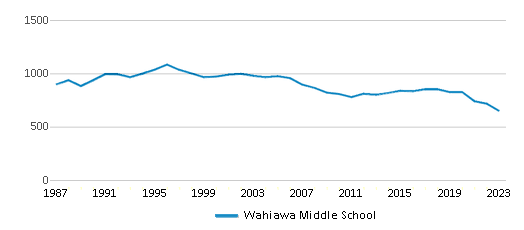
Gender %
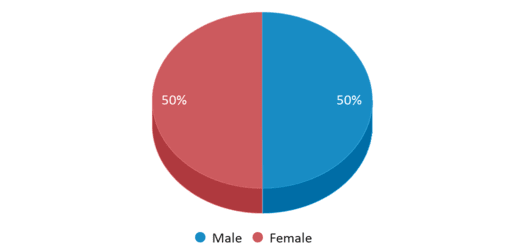
Total Classroom Teachers
45 teachers
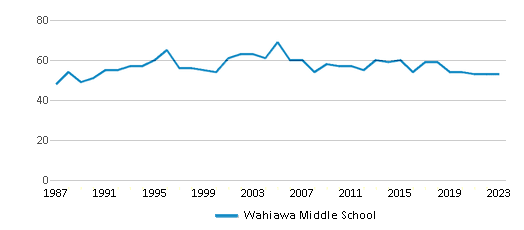
Students by Grade
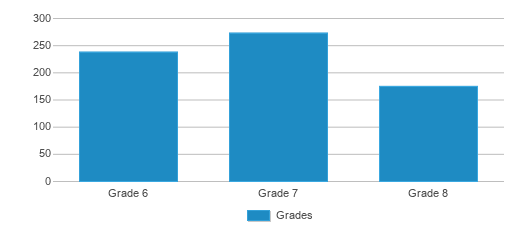
School Calendar
School Rankings
Wahiawa Middle School ranks within the bottom 50% of all 292 schools in Hawaii (based off of combined math and reading proficiency testing data).
The diversity score of Wahiawa Middle School is 0.76, which is less than the diversity score at state average of 0.80. The school's diversity has stayed relatively flat over five school years.
Overall Testing Rank
#241 out of 292 schools
(Bottom 50%)
(Bottom 50%)
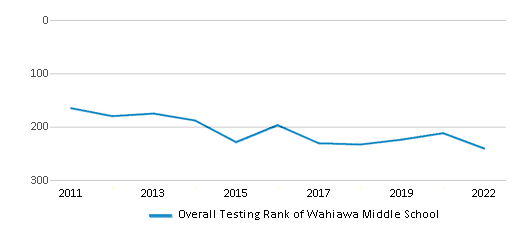
Math Test Scores (% Proficient)
17%
38%
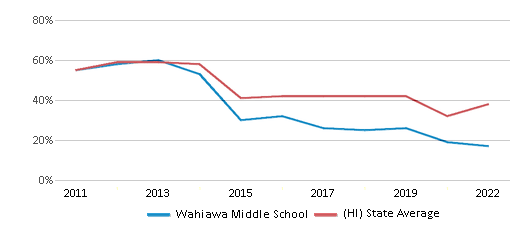
Reading/Language Arts Test Scores (% Proficient)
41%
52%
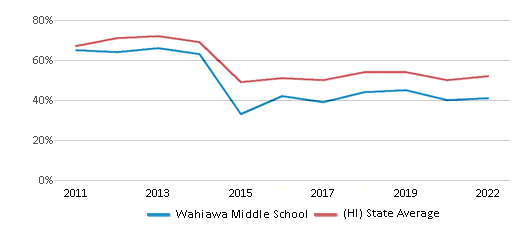
Science Test Scores (% Proficient)
35%
40%
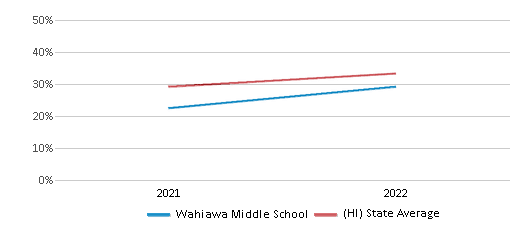
Student : Teacher Ratio
15:1
14:1
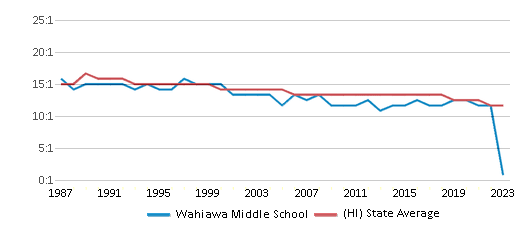
American Indian
n/a
n/a
Asian
30%
24%
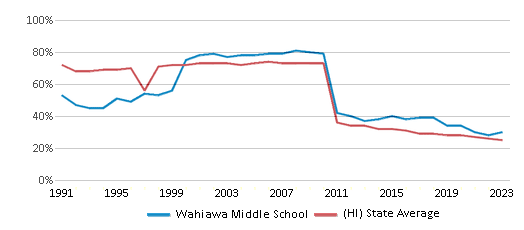
Hispanic
22%
19%
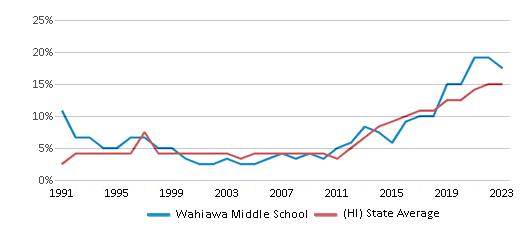
Black
1%
1%
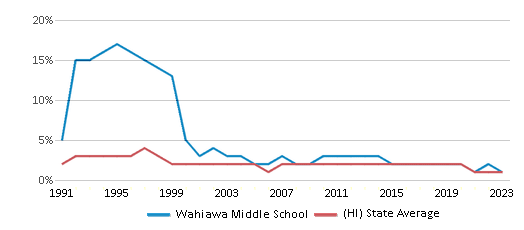
White
4%
11%
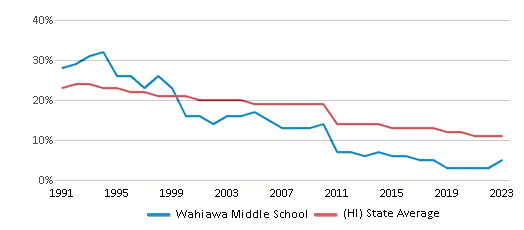
Hawaiian
29%
25%
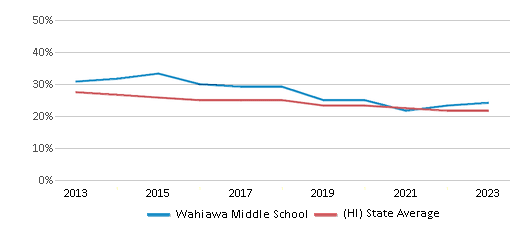
Two or more races
14%
20%
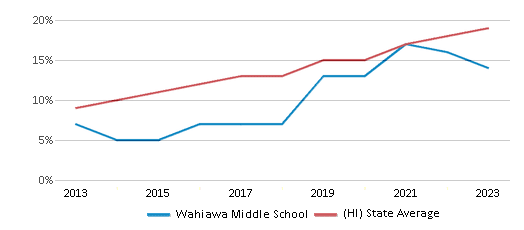
All Ethnic Groups
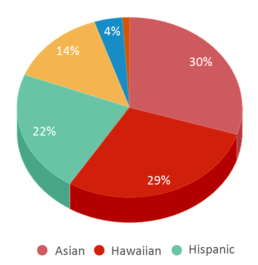
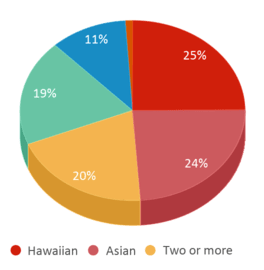
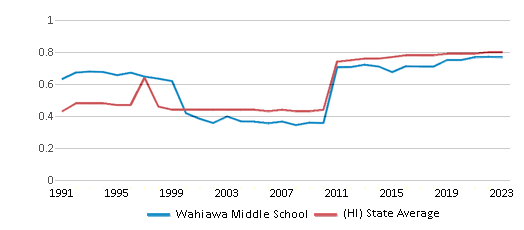
Participates in the National School Lunch Program (NSLP)
Yes
Eligible for Free Lunch
52%
37%
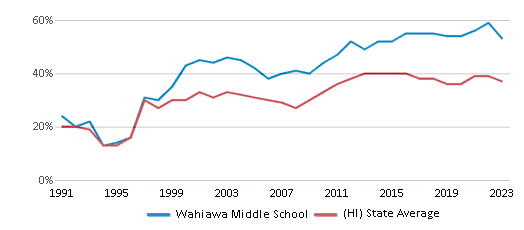
Eligible for Reduced Lunch
12%
9%
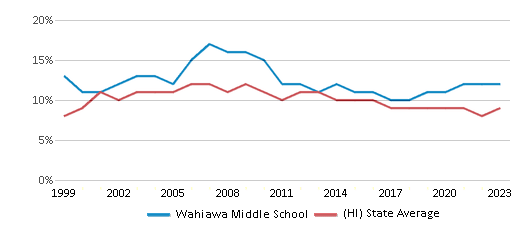
School Statewide Testing
School District Name
Source: National Center for Education Statistics (NCES), HI Dept. of Education
Profile last updated: 02/09/2025
Frequently Asked Questions
What is Wahiawa Middle School's ranking?
Wahiawa Middle School is ranked #241 out of 292 schools, which ranks it among the bottom 50% of public schools in Hawaii.
What schools are Wahiawa Middle School often compared to?
Wahiawa Middle Schoolis often viewed alongside schools like Kamalani Academy by visitors of our site.
What percent of students have achieved state testing proficiency in math and reading?
17% of students have achieved math proficiency (compared to the 38% HI state average), while 41% of students have achieved reading proficiency (compared to the 52% HI state average).
How many students attend Wahiawa Middle School?
686 students attend Wahiawa Middle School.
What is the racial composition of the student body?
30% of Wahiawa Middle School students are Asian, 29% of students are Hawaiian, 22% of students are Hispanic, 14% of students are Two or more races, 4% of students are White, and 1% of students are Black.
What is the student:teacher ratio of Wahiawa Middle School?
Wahiawa Middle School has a student ration of 15:1, which is higher than the Hawaii state average of 14:1.
What grades does Wahiawa Middle School offer ?
Wahiawa Middle School offers enrollment in grades 6-8
What school district is Wahiawa Middle School part of?
Wahiawa Middle School is part of Hawaii Department Of Education School District.
School Reviews
4 8/12/2018
This school has made a major turn around! Even though it's located in an economically depressed area, the administration tirelessly applies for and wins grants yearly. This school offers: free after school programs (tutoring, cooking, sports, robotics, art, to name a few offerings), required in computer class coding, Presidential Achievement, Girl Up!, National Junior Honor Society of Middle School Students, a vast library with OverDrive access, Honors courses, drama, chorus, piano, and art. Look out for an update to the 2018-2019 social studies curriculum! Their resources go beyond what is tangible and includes each staff member's dedication to your child's success. Though I must add their use of Google classroom and Infinite Campus helps parents keep track of their children's deadlines better than an analog planner. Don't count Wahiawa Middle School out because of a review posted 11 years ago. Smart and savvy leadership has flipped the script on this public institution of learning.
2 7/9/2007
While this school has a great art class and library, this school lacks focus on the students. Kids are often passed over and not made to achieve success in school. I feel that it cannot meet it's educational responsiblities due to lack of funding. My son attended here and was never given a single book for any class. They had about 30 class books per room that was shared among all the students, this prevents kids from taking the books home to study. I could not help my student study due to lack of study materials. I think this could be a great school with support from the community.
Review Wahiawa Middle School. Reviews should be a few sentences in length. Please include any comments on:
- Quality of academic programs, teachers, and facilities
- Availability of music, art, sports and other extracurricular activities
Recent Articles

What Is A Charter School?
Explore the world of charter schools in this comprehensive guide. Learn about their history, how they operate, and the pros and cons of this educational innovation. Discover key facts about charter schools, including admission policies, demographics, and funding, as well as what to look for when considering a charter school for your child.

10 Reasons Why High School Sports Benefit Students
Discover the 10 compelling reasons why high school sports are beneficial for students. This comprehensive article explores how athletics enhance academic performance, foster personal growth, and develop crucial life skills. From improved fitness and time management to leadership development and community representation, learn why participating in high school sports can be a game-changer for students' overall success and well-being.

February 05, 2025
Understanding the U.S. Department of Education: Structure, Impact, and EvolutionWe explore how the Department of Education shapes American education, from its cabinet-level leadership to its impact on millions of students, written for general audiences seeking clarity on this vital institution.









